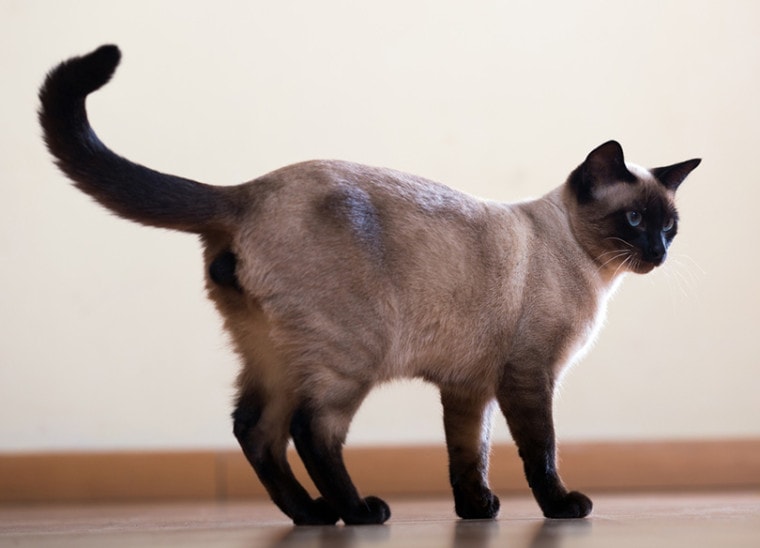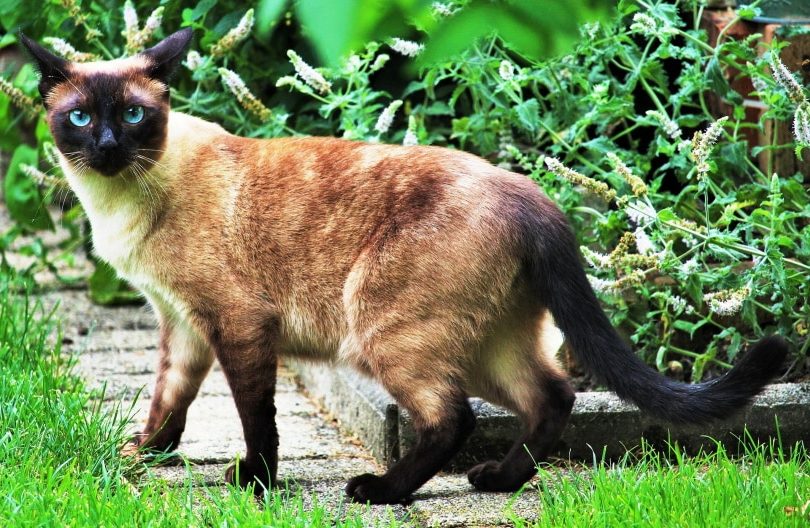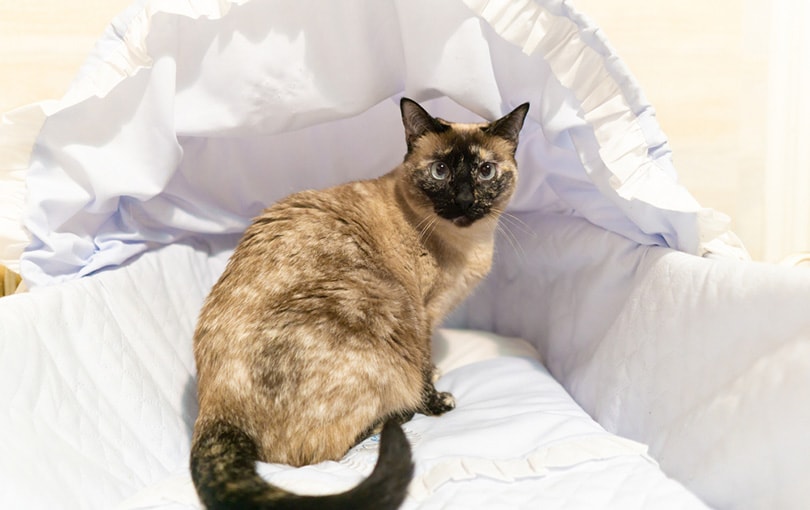
Despite their refined features and having an unfounded reputation for being mean, Siamese cats are just big softies. Today, they can be found in many a household lazing on their human’s laps, lamenting (quite vocally) the injustice of their human daring to shut them out of the bathroom, or sitting on laptops while their human tries to work.
This big softie of a cat, however, has a long and captivating history—a lot of it spend being adored and worshipped. In this post, we go back in time, meet the ancient Siamese, and follow their journey to the present day.
Origins
Siamese cats are a very old breed. They originated in Thailand—historically called “Siam”. More specifically, they are thought to have originated from the Ayutthaya Kingdom (1351–1767), a part of southeast Asia that is now modern-day Thailand.
Images appearing to show the Siamese can be seen in the Tamra Maew, or “The Cat-Book Poems” which dates back to the Ayutthaya period. According to legend, a Burmese king collected Siamese cats as war treasures and took them back to Burma with him, believing them to have the power to bring good fortune.
The Siamese could well have been around before the Ayutthaya period, though, as the breed’s exact origins remain something of a mystery. What we do know for sure is that the Siamese’s ancestors are the Wichien Maat breed, also known as the Thai cat. In ancient times, Siamese cats were revered by the Thai royal family. Considered spirit guardians, they were said to have been given the role of guarding palaces and temples, with the royals being the only people allowed to keep them.
Another myth claims to explain how Siamese cats got one of their most famous physical traits. The story tells that a Siamese cat was once tasked with guarding a precious vase or goblet— they watched it so fiercely that they ended up with crossed eyes!
This is not just historical, either! Even today, cats are beloved in Thai culture. If you visit Thailand, you might see the locals bringing their cats out for a day at the park.
Siamese Cats in the 19th Century
Though the exact dates of the Siamese’s entry into Europe and America aren’t clear, the late 19th century marks the approximate time the breed started to arrive overseas and become popular. The first officially recorded Siamese, a gift from the American Consul in Bangkok, was sent to the U.S. in or prior to 1878. His name was “Siam”.
We know this because 1878 is the year that President Rutherford B. Hayes personally made the acquaintance of the said Siamese. A few years later, in 1884, a pair of Siamese cats were imported into Britain as a gift for the British Consul-General in Bangkok’s sister, Lilian Jane Gould. Gould was later responsible for forming the Siamese Cat Club at the start of the 20th century.
Siamese continued to trickle into the U.K. in small numbers, with some of these cats forming the base stock for Siamese in the U.K. The Siamese’s unusual appearance began to attract a lot of interest around this time, with some being fascinated and others finding the breed bizarre.

Siamese Cats in the 20th Century
The 20th century saw the development of the modern Siamese whose features are arguably even more striking than those of the traditional Siamese. Traditional Siamese cats are known as “apple-heads” due to their head shape and generally rounder appearance. By contrast, the modern Siamese were selectively bred to have a triangular-shaped head, larger, pointier ears, and a more slender body.
The introduction of the modern Siamese and show judges’ preference for their physical qualities resulted in the traditional Siamese’s popularly floundering, and by the 1980s, it had become pretty rare to see them in shows. However, some continued to breed the traditional Siamese and the two types of Siamese eventually came to be known as distinct sub-breeds despite sharing the same ancestry.
Luckily, the continued breeding of the traditional Siamese prevented the disappearance of the breed. Today, the International Cat Association and the World Cat Federation accept the traditional Siamese but refer to them as “Thai cats” rather than “Siamese cats”.
The Siamese has produced many of the cat breeds we know and love, including the Balinese, Himalayan, and Birman.
Siamese Cats Today
Beloved and even revered throughout history, the Siamese cat—both modern and traditional— continues to be so in many households and cat shows across the world today! There may also be some truth to the mythical claims that Siamese cats are lucky—they enjoy one of the longest cat lifespans of any breed, living on average between 15 and 20 years if cared for properly.
Siamese cats are also some of the best furry companions a cat lover could ever wish for and many can even hold a full conversation with their humans! Siamese cats are well-known for being one of the most vocal breeds and love nothing more than a good old chinwag with the people they love the most. They’re also incredibly affectionate, trusting, and completely devoted to their loved ones.

Conclusion
So, the Siamese has been a temple guard, a possible spoil of the Burmese-Siamese war, has rubbed shoulders with presidents, and today is a (very devoted) fixture in many cat lovers’ lives. What a story! If you’re considering adopting a Siamese yourself, you’ll be bringing home not only a wonderful companion but also a cultural and historical icon.
Featured Image Credit: : BearFotos, Shutterstock






